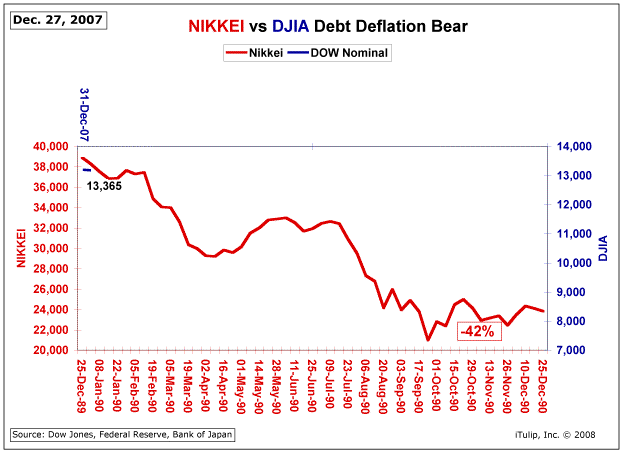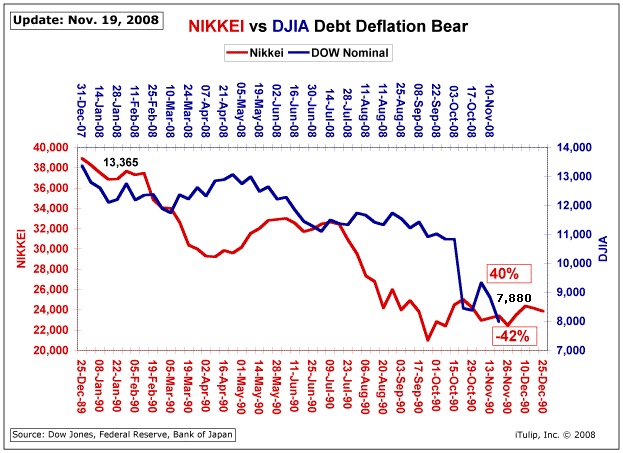Re: The $ is getting K I L L E D
I don't know if I will go that far as to call a secular bull where this have been the case, but I think the kind of situation that started in 1942, have certain similarities to today. That is: A large increase in government debt, to offset other forces. We don't yet know it private debt will go down relative to GDP as the economy recover from the recession, it could instead move higher (and give a situation more like the late seventies), but if it was to go lower, then I think high government spending would offset that, and even possibly result in market conditions similar to the 1939-1950 era, the trend that started in 1942, already then in transports, was partly due to the fed monetizing the debt needed to pay for the war, and the bull-market that followed in the 50-s-60-s, came because the fed took control over inflation in around 1949, and the private debt also had been deflated and was ready to once again expand. Those who bought stocks, in that whole era between 1937-1950 would had done quite well over the long run, and I think maybe something similar is at hand now.
Just to specify. When I say deflationary secular bull, (I don't think of debt deflation, where you have lower private debt to gdp as a deflationary trend, as that can happen with commodity prices trending higher (and goverment debt to GDP trending higher), and inflation going higher, due that offsetting forces in government spending, thus making the trend inflationary, not deflationary, even if there is debt deflation). A deflationary trend is stable or falling commodity prices over a longer time period, and that can happen, or have happened typically as private debt to gdp expand, coupled with productivity gains, but still with commodity prices are stable or trending lower (after a longer inflationary trend have ended).
The productivity gains that could be had now, would had been in the service sector as cost cutting, thus driving domestic prices lower, and lower imported prices from over-capacity in China, but I doubt it will happen to any significant extent due to exchange rate adjustments that will happen. I guess it will be high inflation on imported goods, and somewhat lower inflation on domestic goods and services as things recover. In general I think we still are in a trend, where money printing goes more directly into the CPI than before, ,because there is not so much productivity gains to be had, all of these effects are more or less already taken out. I think the free lunch era (of greenspan) when it was possible to pump the money supply like crazy, and still have low inflation is over.
Originally posted by metalman
View Post
Just to specify. When I say deflationary secular bull, (I don't think of debt deflation, where you have lower private debt to gdp as a deflationary trend, as that can happen with commodity prices trending higher (and goverment debt to GDP trending higher), and inflation going higher, due that offsetting forces in government spending, thus making the trend inflationary, not deflationary, even if there is debt deflation). A deflationary trend is stable or falling commodity prices over a longer time period, and that can happen, or have happened typically as private debt to gdp expand, coupled with productivity gains, but still with commodity prices are stable or trending lower (after a longer inflationary trend have ended).
The productivity gains that could be had now, would had been in the service sector as cost cutting, thus driving domestic prices lower, and lower imported prices from over-capacity in China, but I doubt it will happen to any significant extent due to exchange rate adjustments that will happen. I guess it will be high inflation on imported goods, and somewhat lower inflation on domestic goods and services as things recover. In general I think we still are in a trend, where money printing goes more directly into the CPI than before, ,because there is not so much productivity gains to be had, all of these effects are more or less already taken out. I think the free lunch era (of greenspan) when it was possible to pump the money supply like crazy, and still have low inflation is over.


.svg.png)






Comment